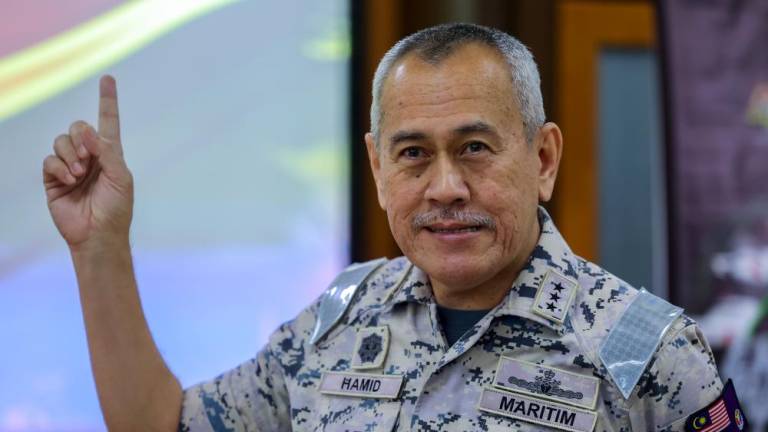THE Cross-Strait ties are poised to determine the outcome of future power parity in the region and the prospects of greater all-out conflict.
The increased incursions and classic buzzing playbook have again highlighted the enormous stakes at play in cementing the importance of both players to one another for both geopolitical and economic reasons.
The climate over the past two decades at least has shifted from initial wariness over the intention of Beijing to one that is increasingly in pivot to Beijing’s sphere of dominance and grip.
Left with no viable option but to prioritise the overwhelming dependence on Beijing and the fear of upsetting China by changing the conventional dogma of Cross-Strait ties, Taipei is left with increased vulnerabilities and tied hands over the larger picture of long-term national interests and survival.
This has been the case before the current administration’s clear stance on its future path toward Taiwan, which has solicited the scramble for responses from Beijing in making clear its displeasures.
Beijing sees no other credible option but to project strong clarity that any further actions from Taipei that are deemed to challenge the entrenched order will be met with no-nonsense countermeasures that are two-pronged.
Firstly, it is to prevent the pursuit of any change to the current order and secondly, to send a firm deterring message to future governing parties and the West that the Taiwan issue remains off limits to the West’s strategic containment playbook.
Regardless of any change to the strategic ambiguity approach by either Taipei or Washington, this remains the ultimate red line by Beijing to deny Washington’s ambition of using Taipei as leverage and the greater card in its chess move on reorienting future power parity in the region.
Increasingly, openings for greater chips and cards in the future peaceful embrace of closer Cross-Strait ties and negotiations over deeper Track 1 policies have been limited by the dominant sway held against the say of the general Taiwanese populace, especially the new demographic groups that have made their stance clear on their affiliation.
This has been worsened by the sealed outcome of Beijing’s policy in containing Taipei, with a near-total pivot to an antagonising and bellicose stance in dealing with the current administration’s orientation.
The increased grip of the Chinese Communist Party in local Taiwanese affairs, especially in the influence of local elections and the swaying of sentiments of the masses, has fundamentally changed the landscape of the political orientation of Taiwan with higher stakes involved in its political independence.
Increasing depth of espionage in various forms including cyber and infiltration of critical sectors have posed greater challenges for Taipei to confront in juggling between taking a firmer stance and playing second fiddle to avoid upsetting the apple cart.
The larger aim of revitalising the Chinese Dream of 2049 through the hundred-year marathon has produced strategic chess moves from the Belt and Road Initiative to the Regional Comprehensive Economic Partnership and a larger aim of controlling the South China Sea with this regard in mind.
The ultimate dream of reuniting Taiwan has also projected greater assertive measures and chain impact in the region and beyond, including the Pacific and the greater Indo-Pacific sphere.
The spectrum of competition and relations with Beijing remains structural, systemic and value-driven, where individual influence and affiliations matter less.
Beijing’s no holds barred impetus and drive in narrowing the existing power gap with an all-out approach while simultaneously enhancing its foothold in the Indo-Pacific, are banked on as the new major fuel by Washington in justifying its renewed containment measures.
Beijing has wisely used the openings, opportunities and guarantees provided by the US in maintaining this global system that allows peaceful access and progress of trade that has fuelled Beijing’s historic rise.
The current state of affairs of risky overtures and overdependence on one power in securing one’s immediate urgent need of economic repairs and in ensuring internal political legitimacy are unsustainable, risky and detrimental to both the economic vitality and sovereignty preservation of the state and other players.
Reverberations and the fear created have backfired on Beijing, pushing these affected players deeper into the security assurance spectrum provided by the West.
In China’s calculated efforts to deny American forces’ power projection in its immediate vicinity and to maintain its divide and rule approach, these manoeuvres are not sustainable in the long strategic game.
Regional players have tried to maintain their centrality and avoid the lines of conflict between Washington and Beijing to no avail.
They remain rightly fearful and wary of Chinese actions and increasing acts of impunity in the region, which violate the rules-based order and their territorial integrity and national sovereignty.
A greater scramble for assurances of counterbalance measures from the West, especially Washington, has been initiated with greater urgency discreetly.
However, more stark measures on official capacities are not able to be executed in maintaining the needed ties and avoiding any reprisals from Beijing.
This meticulous yet risky and unsustainable approach has been the domain of the regional orientation for years, which needs a strategic and futuristic revamp.
Policies on safe mode and strategic ambiguity have been charted for decades at the larger expense of the region’s collective national interests.
A clear, strategic and strong stance should be the new norm.
Wise and strategic clarity of vision and conviction in jettisoning the entrenched reliance on Beijing is setting a new course of strategic clarity.
A new dependence with foresight on future great players that are both dependable and mature in universal norms adoption must remain the path forward, where Washington and the West are projected to be the most credible and dependable players in this aspect, notwithstanding their past systemic shortcomings.
The dramatic transformation in China’s modernisation in the military field, mastery of futuristic technology and world economy, and dominance in innovation give a new sense of both awe and anxiety, but Washington remains confident in its existing and future advantages in braving the containment challenges.
This mixture of anxiety and fascination with China’s return to power continues to shape the security architecture of the region.
The long game will create barriers to Beijing’s ultimate dream.
As awareness and fear of falling deeper into the trap of entrenched China’s dependence grow, a pivot away from the conventional dogma and trapping of sheer dependence on the volume of trade, market access and capital as the pioneer tools of growth will mean less dependence on Beijing’s advantages and offers in this spectrum.
As a lesser focus is given on Chinese reliance, the gradual transition to greater internal self-sustaining capacity will render the long-term dependence on Beijing’s limited offering reduced.
As the world transits to a new pillar of innovation and value-based growth essence, the West’s endurance and staying power in this parameter should not be quickly dismissed or underestimated.
The reassertion of America’s assurance and support to this region has provided a huge relief for affected players, although meticulous orientations remain in avoiding backlash from Beijing.
Regardless of future leadership transitions in Washington, the pivot to the Indo-Pacific will be here to stay in safeguarding America’s status quo and primacy.
The eventual shift to the moral conviction of universal norms and values based on the ideals of democracy, respect for human rights and sustainable trade and economic policies, will trigger the regional and global awakening of self-sustaining these norms and order for their eventual long-term survival.
For this decade, where the risks of an all-out high-intensity conflict over Taiwan remain the highest, the prospects of the move by Beijing rest on three main parameters.
Firstly, the level of deterrence impact and credibility of comprehensive involvement of the West and Washington.
Secondly, President Xi Jinping’s urgency to cement his grip and the tightening window period for him and the party to consolidate internal and external advantages while they can before being made more obsolete and challenging in the decades after and the shorter time frame towards the 2049 Dream.
Thirdly, the anticipation of the changing power parity and greater in-depth totality of the potential return of Donald Trump in the 2024 presidential election will bolster America’s hard-hitting approach to squeezing Beijing and increasing the edge of Washington with the coming fruition of Trump’s brainchild of Battle Force 2045 and Battle Force 2025 in defending Taiwan and preventing the larger domino effect of the region’s high stakes at play.
Comments: letters@thesundaily.com















